Rural Villages Get First Schools
The Taliban are building schools across Afghanistan, in communities where no school existed before. While their policies on education have been criticized, this is a positive step. Yet the scale of the need is vast, and challenges remain.

Written by Brian Conley, reporters names withheld due to safety concerns.
Alive-in is a not-for-profit media agency that mentors journalists from underrepresented communities to increase local and national understanding.
If you are able to support our work financially, please click the button below.
This article is part of a broader series exploring changes regarding access to education in Afghanistan, created with support from Afghan Witness (a project of the Centre for Information Resilience), which uses open-source investigating to expose human rights violations and counter mis- and disinformation. This series will incorporate open-source techniques to further corroborate the investigative reporting.
AFGHANISTAN, HELMAND, ORUZGAN–Surkh Murghab, an area with more than eight hundred homes, sits just fifteen kilometers from Tarin Kot, the provincial capital of Oruzgan, a province in central Afghanistan. Despite its proximity to the capital, no schools have been established here in the previous forty years. Recently, with the support of UNICEF and approval from the Taliban, a new school was built, providing 1200 children with the opportunity to seek an education for the first time.
“Two decades of war took away my chance to seek education, most of the time, my belongings were on my back as we fled from one place to another.”
Framed by a blue sky and green fields, Sediqullah [surname], one of the village elders in Surkh Murghab smiles as he speaks about the new school in his community and the benefit he hopes it will provide his family and the other children of his village.
“I am very happy that a school is built in my village, and my kids go to school every day. My son asked me why I didn’t go to school last night, which made me very disappointed, I wish I had studied too.”
Since their return to power in 2021, much has been reported about the Taliban’s attitude towards education, with UNICEF noting, “Without sustained access to education, 7.9 million more children risk missing out on critical education.” While a recent Human Rights Watch report found that in addition to limitations on girls' education, there has been “an alarming deterioration in boys’ access to education and the quality of their education.” Although it’s clear that Afghanistan is moving backwards in some areas of education, Alive-in/Afghanistan’s research finds pockets of hope.
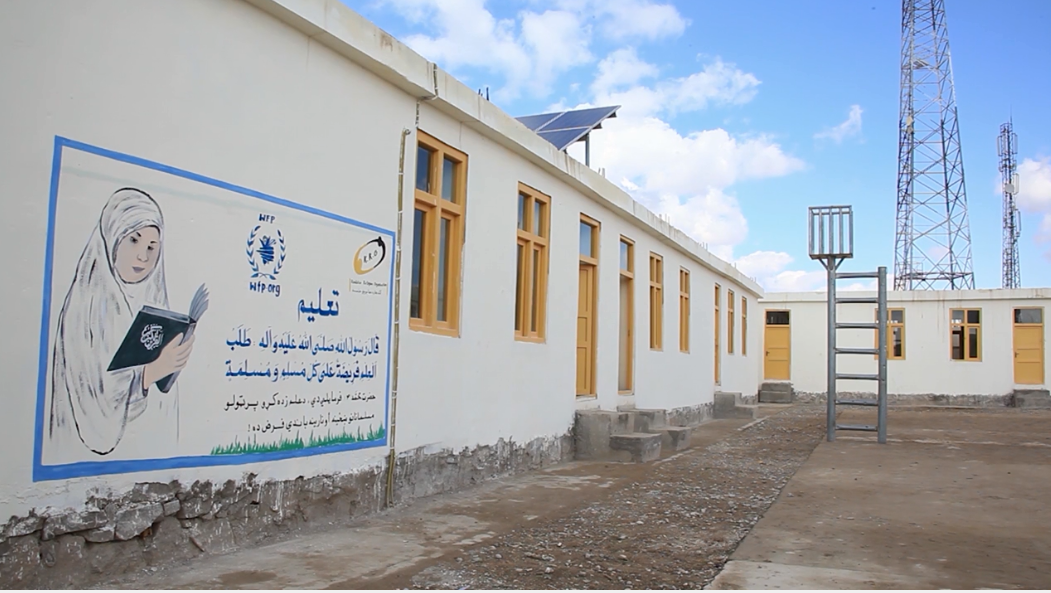
Ehsanullah Ehsas, a spokesman for the governor of Oruzgan, told Alive-in/Afghanistan, “20 schools will be built in 1403 in areas where schools never existed before.” The current year is 1403, according to the calendar used in Afghanistan, extending from March 2024 until March 2025.
Sediqullah, the village elder, sent his oldest son to Kabul to receive an education. “Now that a school is built in our village, my two sons go to school every morning. We are really happy that a school has been built right in front of my house.”
Alive-in/Afghanistan spoke with two young boys who are excited to have access to education within their village. Ten year-old Javid explains, “We didn’t have school previously, the kids would just play fight, or bad mouth each other, now we are really happy because we are studying.”
His friend, twelve year-old Sediqullah, aware of the future prospects it holds, adds “I want to become an engineer or a doctor. I don’t want to farm for other people, or be a laborer working with pickaxes, or shovels.”
Surkh Murgab is not the only area to see its first school built after the fall of the previous government. Just a few kilometers to the northwest, 70 year-old retired teacher Ghawsuddin Jalalzai opened a school in the Baluchi area, where he and a number of volunteer teachers now instruct 450 students, including 180 girls. This demonstrates a substantial increase from 270 and 77 respectively, since Alive-in/Afghanistan first reported on the school back in 2022.
Education Going Rural
Ghawsuddin estimates as much as 95 percent of the area's population are illiterate. He is one of the rare residents of the Baluchi area that was lucky to go to school in the capital Kabul and has been a teacher in several Afghan provinces. For the past 12 years of his career, he was a teacher in Tarin Kot.
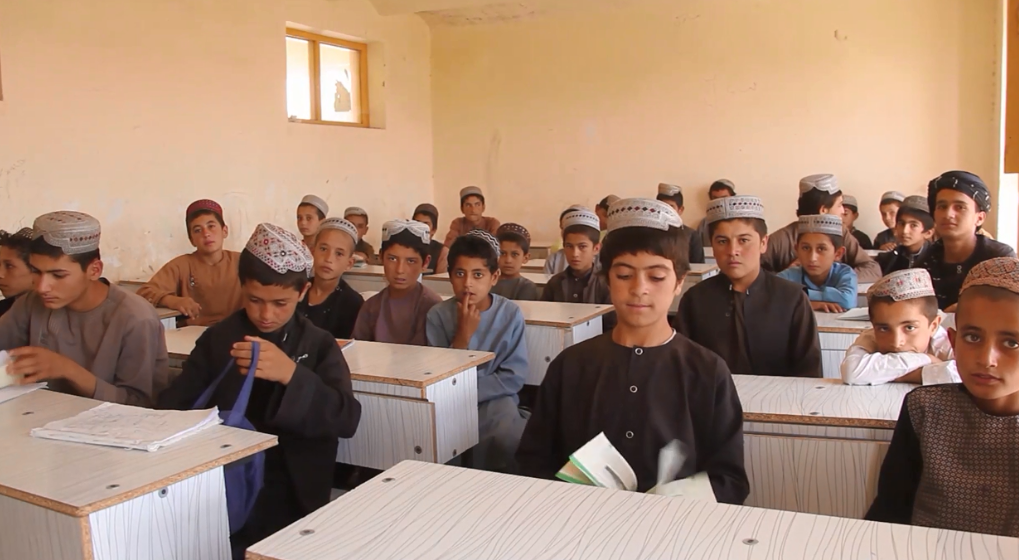
According to Shamsullah Kamran, the head of Oruzgan’s Education Department, the construction of the school in Surkh Margab was completed just before the school year began, facilitating access to education for 1200 children for the first time.
Whether or not the school has the appropriate facilities and personnel remains to be seen. However, Sadiqullah is optimistic, saying, “Before this, our kids would play in the street all day, or bring feed for livestock. We hope that this school is equipped with professional teachers and adequate equipment.”
Shamsullah Kamran informed Alive-in/Afghanistan that madrasas in Oruzgan teach, Rule/Method, Quran Review, Proper Reading, Recitation, Pashto, and Arabic.
Research by AiA partner Afghan Witness suggests that in rural areas at least, madrasas are filling a necessary gap in education. According to a report they published in November of 2023, Rural madrasas, where formal schooling is not possible, also teach other subjects such as mathematics, science, physics, geography, and languages, including Arabic, Pashto, and Dari/Farsi.
The challenges facing Afghanistan’s education system are great, predating the Taliban’s return to power, and were exacerbated by the decision of international donors to stop supporting Afghanistan. According to UNICEF report released in August 2021, titled Situational Analysis of Children and Women in Afghanistan, “Lack of allocation of adequate domestic funds and poor allocation of resources in education has left many children in Afghanistan without access to education services, as has dwindling donor support along with allegations of corruption and nepotism within the sector.”
At the time, at least 36% of expenditures in education were funded by external support.
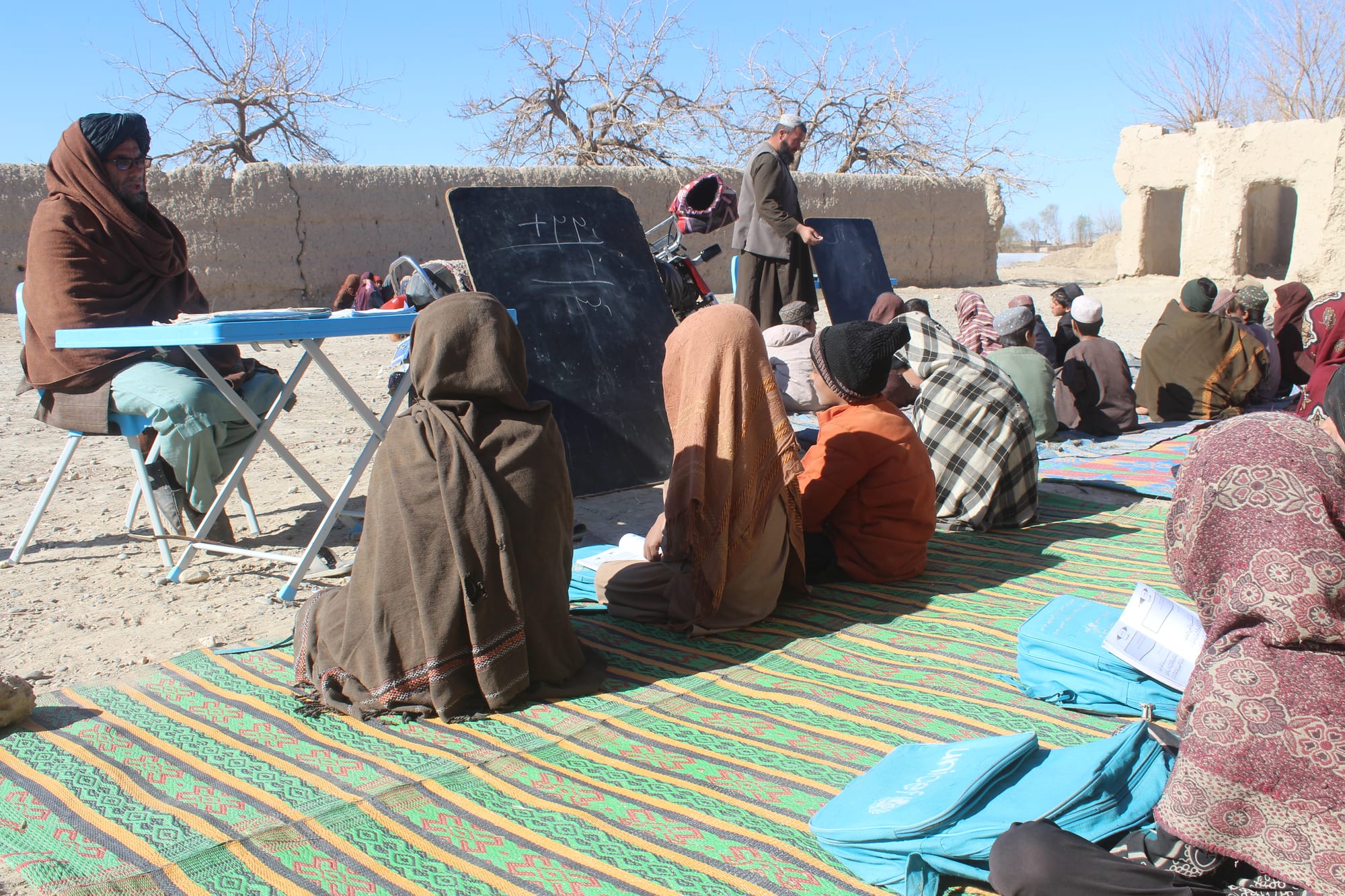
In Helmand province, like Oruzgan and several others, there are huge barriers to ensuring that every child is able to complete primary school. According to the Director of the Helmand Education Department, Mawlawi Muhammad Ewaz Ansari, the Taliban government has recently been establishing schools in a number of districts around Helmand where education was previously unavailable. Ansari told Alive-in/Afghanistan that the Taliban has, of late, taken practical steps for education in distant districts of Helmand such as Baghran, Baghni, Deshu, and Bahramcha.
“Recently most of the desert areas of this province have been developed, whose residents do not have access to any kind of education, but they have started trying to provide education to all the residents of Helmand because that is their responsibility.”According to Ansari, since August 2021, the Education Department has opened eighteen new schools across thirteen districts, providing access to education for 4,925 students who previously did not have opportunity for learning in their area.Mullah Abdul Salim Taib informed Alive-in/Afghanistan that the madrasa where he works teaches a variety of 12 subjects, mainly religious in nature, and students attend from eight in the morning until noon.
There is now a school in the Sree Kala area of Helmand’s Nawa district, providing a school to the children in this area for the first time. The majority of the students of this school are girls, whose age is less than 12 years old.
Although the Taliban declared in December 2023 that girls are allowed to attend madrasas, there are still questions about what its distinguishing features are; according to a report by Roza Otunbayeva, a special UN Envoy for Afghanistan, given to the UN Security Council, “It is not entirely clear, however, what constitutes a madrassa, if there is a standardized curriculum that allows modern education subjects, and how many girls are able to study in madrassas.”
SURKH MURGAB, ORUZGAN — In the village of Surkh Murgab, the Taliban recently completed the first school available to the children of this area. Oruzgan has the second lowest attendance of primary school, after Helmand, due to the absence of schools and qualified teachers throughout the province.
Substandard Amenities and Inadequate Infrastructure
Qari Abdul Rahman, the school’s headmaster says, “We are still trying to provide our students with a quality education, but we have some challenges, which caused some problems for our teaching. For example, there is a lack of school buildings, a lack of safe drinking water, and some other problems that we are asking the authorities to solve.”
Habibullah Elham, another teacher at the school, says, “The boys and girls of this village are very enthusiastic about school, but the school has a series of problems. This school has no building, no carpets, no chairs, and no desks. It faces problems in both winter and summer, but despite these problems, students still go to school and learn.”
Abdul Aleem, one of Sree Kala’s tribal leaders, is not educated because he did not have access to education and spent most of his life in wars. “Whenever I wanted to start studying, there was war. But the current peace is a good opportunity for education and we willingly send our children to study.”
Locals Taking Control, Initiative
This is not the first time Alive-in/Afghanistan has reported on new schools being established in Helmand. In November, 2022 Alive-in/Afghanistan reported about the work of Abdul Qader Pasoon, a villager from Nahr e-Saraj who opened the first school there in mid 2022.
“I don’t want the current generation to experience what the previous generations did, being deprived of education. So I try to teach them what I have learned,” expressed Qader.
Qader himself only studied until 10th grade. He and his family left their village for Kandahar City, in the neighboring province, around 11 years ago due to the ongoing conflict that displaced thousands of Afghans.
Qader had to go to every parent’s home and convince each one to send their children to his facility, “Now they are all willing, and are even cooperating with me.”
According to Qader, more than 2,000 children live in the area that need schooling, but he can not accommodate them all. Originally the school supported 200 children, but ahead of this story Abdul Qader informed Alive-in/Afghanistan that number is now 350 students and 50% of them are girls. Since the original report, Qader and Mawlawi Matiullah, the Mullah for the village, have hired one additional teacher for the school.
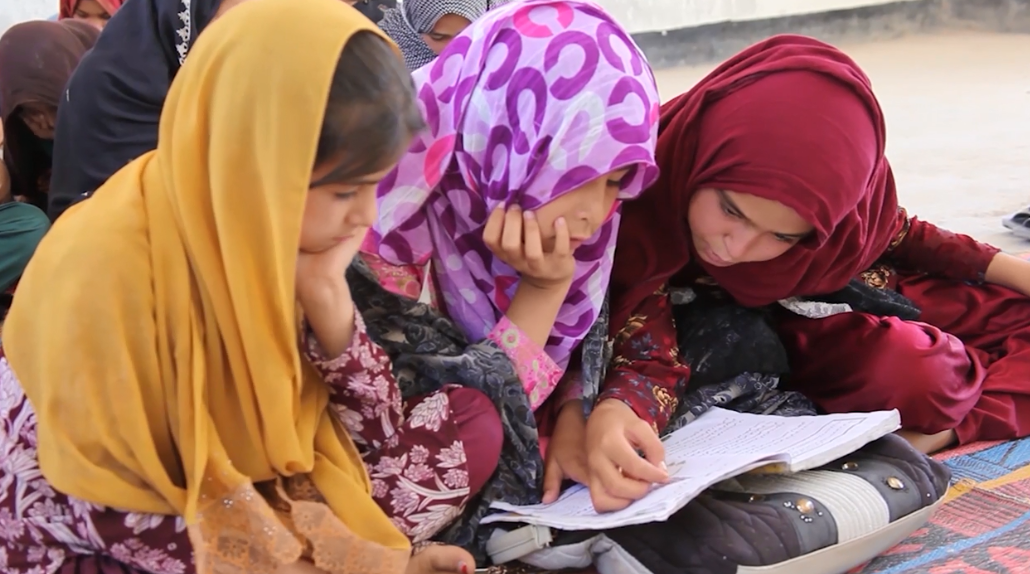
In addition to primary schools being opened in communities that never had them before, Alive-in/Afghanistan recently reported on Parwaz Academy, a learning center that was opened in the province of Nimroz, which serves women and girls above the age of 12.
Ms. Homa Anwari opened Parwaz Academy after she obtained approval from Afghanistan’s Ministry of Education under the current Taliban government. Although the Taliban banned girls above 6th grade in most of Afghanistan from seeking education following their victory, this approval allows Ms. Anwari to provide classes in English and computer basics for women.
Mawlawi Gulbuddin Sharifi, the Deputy Education Director for Nimroz, said, “According to the Islamic Emirate’s policy, Girls are barred from seeking education above 6th grade because they were mixing with boys. But madrassas and Islamic education both public and private operate until the 14th grade, providing a separate space for girls with female instructors.”
Alive in Afghanistan's research suggests that Sharifi is mistaken about the presence of mixed-gender secondary schools. During the Republic that predated the Taliban's return to power girls and boys above 6th grade attended school in separate, gender segregated classes.
Mr. Sharifi considers Islamic and modern education mandatory for both men and women, “God’s command and hadith from the Prophet is that men and women must study, but according to Islamic Sharia law.”
Husna Arbab, who attends 7th-grade at a private local school, said she is thrilled to learn computer programs at Parwaz, given the current restrictive conditions.
An 11th-grade student who spoke to Alive in Afghanistan on the condition of anonymity encouraged girls barred from education to take advantage of the program and the great opportunity the learning center provides.
In addition to the Parwaz Academy, in July 2023 Alive-in/Afghanistan reported on Maktab, an application developed by a team of Afghans. The application enables Afghan girls who cannot go to school to learn online from their homes, as long as they have an internet connection.
According to Ms. Monib, the application is primarily aimed at providing access to students who are not allowed to attend regular classes. On its website, the platform says it focuses on conservative families.
“The platform has an awareness module and a social interaction function so users can share knowledge and be connected with each other and try to promote education importance,” the website explains.
"With increasing restrictions imposed by the Islamic Emirate on women's and girls' education, the number of followers of the online school has increased. Currently, more than 35,000 users, with around 26,000 from inside Afghanistan, primarily girls and the rest, Afghan migrants residing in countries such as Iran, Pakistan, Tajikistan, and others, are following their lessons through this application," Ms. Monib told Alive in Afghanistan.
Asked for an update regarding their number of users ahead of this article being published, Ms. Monib informed Alive-in/Afghanistan that they currently have around 10,000 users. Ms. Monib did not offer a reason for the decline in users since the story was first published in July 2023.
According to Ms. Monib, the number of female users has been increasing since the Taliban banned girls from attending schools beyond 6th grade.
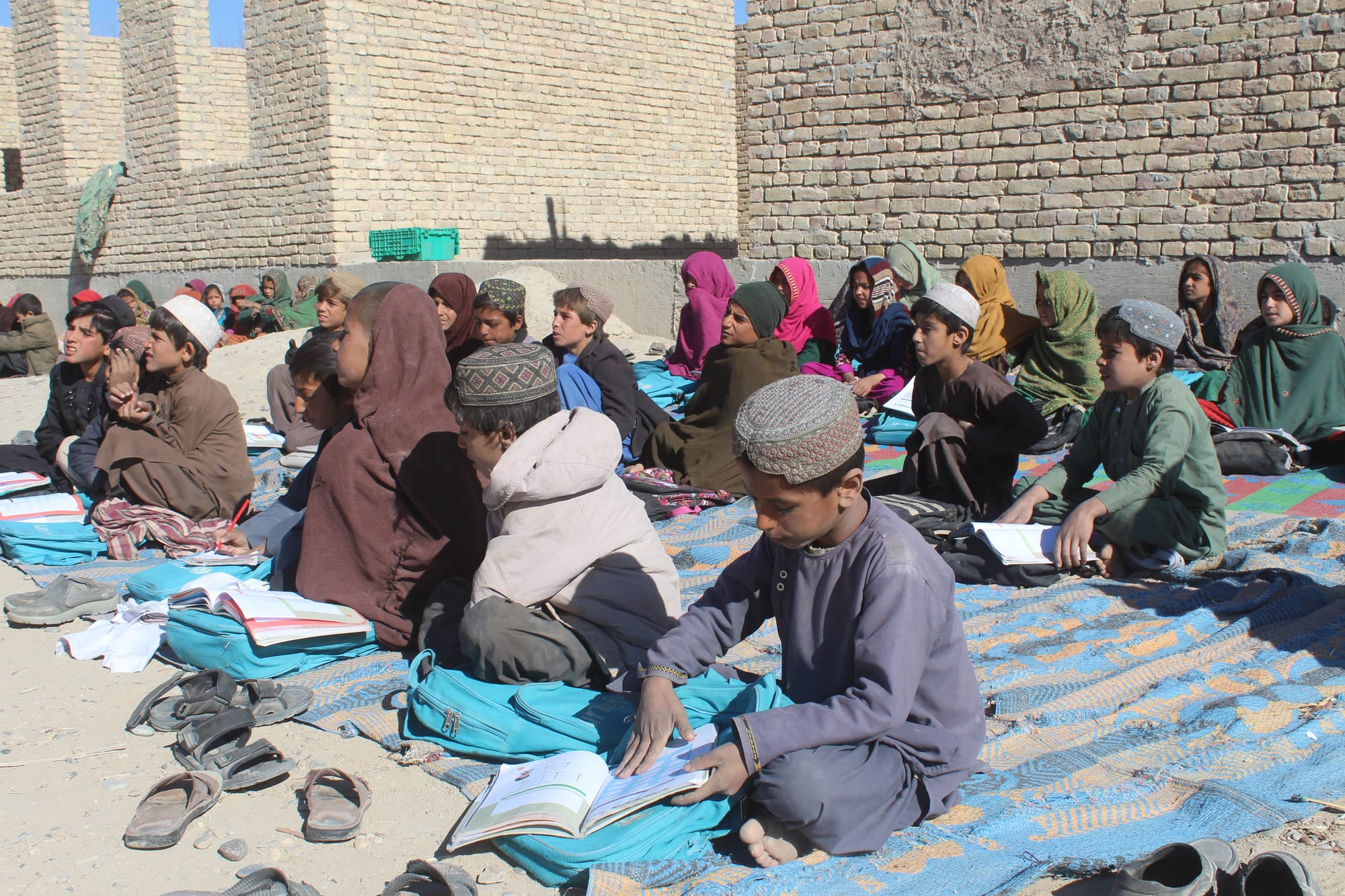
There are many challenges limiting access to education across Afghanistan, yet reports in the media and by international agencies have focused overwhelmingly on the policies of the Taliban. Furthermore, this focus overlooks the fundamental roots of those policies, nor why so many in the Afghan populace are willing to accept them.
Alive-in/Afghanistan’s reporting has repeatedly found that cultural norms and structural issues in Afghanistan continue to restrict Afghan attitudes toward education. As part of our series on Access to Education, Alive-in/Afghanistan heard from women in Nimroz who could not attend school during previous regimes, due to familial attitudes about what was appropriate for girls. In Badakhshan our reporter interviewed women who could not continue school because their family felt it wasn’t safe for them to travel long distances on foot to reach the nearest school.
Devastated by Conflict and Severe Economic Conditions
In addition to cultural concerns, Afghanistan’s economic reality enforces some very strong structural limitations on what is possible for Afghan families. It’s not only a lack of schools or cultural biases that prevent Afghans from sending their children to school.
Around 19 million Afghans lived below the poverty line in 2020, according to a United Nations Development Programme report from April 2023. By the end of 2022, UNDP estimated that the number had grown to 34 million Afghans — an increase of 15 million.
Alive-in/Afghanistan’s reporting has repeatedly spotlighted the meager subsistence living conditions facing most Afghans and driving families to send their children to work, rather than school.
SREE KALA, HELMAND — In the village of Sree Kala, children attend the first school ever opened in their community. Decades of war, poverty, and [what] have ensured that schools were never before built in this part of Helmand, where school attendance sits at just 2% of the primary school population.
For example, in Kandahar, children who might otherwise be counting the minutes until school is out spend their day waiting for the water tanker to arrive. Small children as young as four hold yellow jerry cans and buckets as they wait to get their daily delivery of drinking water.
According to Bilal, a 12 year-old waiting to receive his family’s daily water allowance, the water levels are very low in their area. So the children wait, terrified that if they leave, their families will not have enough water to drink.
“We wait for an hour to an hour and a half every day,” Bilal Ahmad told Alive in Afghanistan, adding that his family of 10 uses the water for drinking, washing clothes, and bathing.
Even in Kabul, where there are more schools and families are more likely to send their children to school, poverty is forcing families to send their children to work. In 2022 Alive-in/Afghanistan spoke with a number of children who spent their days weaving carpets, rather than playing games or going to school.Two years ago, when Zahra was 10 years old she spoke to Alive-in/Afghanistan about the barriers that prevent her from seeking an education.While weaving a carpet to help her family, she said, "My father has a thrift shop in Mandawi (a market for buying daily necessities), but the money he earns from selling second-hand goods is not enough for our daily expenses, sometimes it is not even enough for his round-trip fare. Therefore, my sister and I are weaving carpets with our mother to help cover the family’s financial needs."
Just a few houses down the road from Zahra, three other sisters are busy spending their teenage and youth years making carpets. 18 year-old Rahima, 16 year-old Aqila, and 14 year-old Farzana spend most of their time weaving carpets at their home. Together they earn a small amount for their daily expenses.
Rahima says, "The only way to save us from hunger and to continue our day-to-day life is carpet weaving."
Among the three sisters, only Aqela, who was born after Rahima, feels lucky because she has been able to study until sixth grade. Farzana, who is the youngest girl in the family talks of herself being illiterate, "We live in a rental house we pay 1,200 Afghanis a month as rent. Moving from one house to another and poverty caused us to give up and say goodbye to school forever."
Despite all this, Rahima who is the oldest of the two sisters, adds, “My sisters and I have no choice but to make carpets at home, we are illiterate. We have no option but to do this so we can take care of our family of seven.”
Even in Helmand and Oruzgan where the Taliban government is actively working to increase the number of schools, there are still many communities where families do not send their children to school, either because no school exists or where poverty forces their children to work.
In July 2022, Alive-in/Afghanistan reported on the complete lack of schools in Chinarto. Chinarto is about 53 kilometers east of Tarin Kot, the capital of Afghanistan’s Oruzgan province. A majority of the road to the district is dirt and there is no sign of education, reconstruction or development in the district despite the billions of dollars of reconstruction funds that poured into Afghanistan from late 2001 to August of 2021 when the previous western-backed government collapsed.
For two decades, the children in this district have been deprived of any form of education. Khaliq Dad is from the Karez village, about 20 minutes from the district center. He says he hasn’t seen any sign of education in the district in the past four decades.
“I was brought up illiterate,” Khaliq Dad stated to Alive in Afghanistan, adding that he couldn’t afford to move to another area or province to seek education, “That’s why I and hundreds of others like me are left uneducated.”
“We have been brought up in this war, neither our kids, nor our elders have any education.”
Malik Sultan, a village elder for the Takhtyan village who came to Chinarto to buy some groceries told Alive-in/Afghanistan, “Two schools were built during the previous government but none were actually used, both are half destroyed,” Mr. Sultan says, adding that although the Taliban designated the schools as madrassas after taking over Afghanistan, the buildings remain empty.
According to Sultan the residents cannot tell anyone anything because they fear being threatened and imprisoned by the Taliban. He added that the continuous war in Afghanistan and especially in his district has been the main hindrance that prevented the district’s children from seeking education in the past 20 years.
Two years ago, Alive-in/Afghanistan reported on Bismillah, a village in Helmand’s Marjah district with no schools or madrassas, where most children are too busy helping their families with the harvest.
"We want a school to be built here. We could farm and go to school if there was one,” Saif says. According to Saifur Rahman, the lack of schools are causing children to lose the opportunity to get an education with each passing day. Saif goes back to work after speaking to me.
Hematullah, a 15 year-old teen harvesting wheat on his farm near Saif joins us after seeing me and the children buzzing around. Hemat, who uses social media, has access to a different world than the one he lives in. He expresses a passion for education that has yet to come true.
“There is neither a school, nor a madrassa here. My generation grew up illiterate, but I want to study and I do not want children younger than me to grow up illiterate just like us,” Hemat told Alive-in/Afghanistan. Hemat’s favorite pastime is cricket and his favorite player is the renowned Afghan all rounder, Rashid Khan, but most people here do not own a TV, or have access to a suitable field where they could spend their time off playing cricket.

Over the past two and a half years, the Taliban’s policies on education have been confusing and often appeared contradictory. What is certain is that they have established schools in many parts of Afghanistan where there has never been access to education. Whether during the recently collapsed Republic, their previous regime, the decade of war, Soviet times or before, thousands of young Afghans have an opportunity they never had before.
At the same time, challenges still remain. The scale of the need in Afghanistan is vast, the Taliban continue to enforce regressive policies restricting women’s rights, and the government coffers have a massive shortfall to meet to cover the cost of bringing education to every district. Finally, even if these challenges are overcome, unless there is relief for Afghanistan’s crushing poverty, many families will still be forced to choose between educating their children and going hungry.
This story includes contributions from archival stories written by Shabana Farahmand, Abdulkarim Azim, Samira Wafa, Waheed Rahman Afghanmal, and Mirzahussain Sadid.
